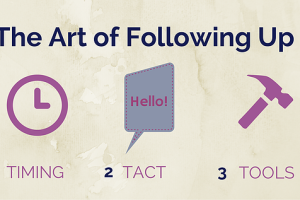In today’s virtual-first world, it’s harder than ever to be the newbie on a sales team. From day one, you must prove yourself without the benefit of in-person collaboration, routine access to managers or other peers for advice, or even the comforts of a shared office space. Although you’re ostensibly “part of the team,” it can feel a lot like you’re toiling away in near anonymity with a handful of unfamiliar leads, wondering whether you’re living up to your manager’s expectations and earning your teammates’ respect. You want to ask questions, but you also don’t want to seem incompetent. You want to get to know your peers, but you’re not sure who to approach.
A few weeks of this kind of mental torture is enough to have even the most promising recruit looking for another job. Which is why it’s more critical than ever that we give due consideration to what our remote onboarding processes look like for new hires in the virtual workplace. Are we taking appropriate steps to ensure that our team members can hit the ground running, build trust with their peers, and work toward clear milestones during their first few months? Or are we basically dropping them in the deep end of the swimming pool and watching to see whether they’ll tread water long enough to earn their keep?
Sadly, we may be doing the latter more often than we want to believe – particularly if we haven’t revised our orientation processes much in the past year. So, in this post, we’ll examine three facets of good digital onboarding practice for the modern work environment.
- Good onboarding offers opportunities to build relationships.
On top of the pressures of learning how to do a new job, newcomers contend with the social anxiety of trying to build rapport with unfamiliar coworkers – many of whom have been working together for a long time already. And those social pressures are hard to overcome when your daily work environment involves a lot of time literally by yourself, with the bulk of your coworker interactions taking place by phone, email, or instant messaging.
It’s the nature of the beast with remote sales teams, of course. And most of our new recruits are likely to be resilient individuals who come prepared to make the most of this hybrid work environment. Still, we ought to try finding creative ways to work real relationship-building opportunities into our recruits first weeks and months on the job.
Consider these suggestions:
Cultivate team ownership of the onboarding process. Particularly in the virtual workplace, we need a sea change in how we think about new hire orientation. Instead of relegating it to a series of things handled by HR and upper management during an employee’s first week or two, we need to nurture a team culture that considers getting new players up to speed everyone’s responsibility. Managers can help facilitate this by letting a new hire’s peers demonstrate routine work processes and by finding creative ways to reward the whole team for a new hire’s successful completion of the onboarding process. They can also encourage seasoned team members to reach out to the new individual privately to introduce themselves.
Schedule frequent one-on-one time with managers and other organizational contacts. In the physical office, conversations occur organically all day long in less formal contexts. But in the remote work environment, we must take that extra step to schedule one-on-one conversations outside of our regular meetings and work phone calls. At a bare minimum, managers ought to build rapport with their new hires by scheduling weekly one-on-one time primarily aimed at checking in on the newcomer and addressing procedural questions as they arise. Even if these calls last only 15-20 minutes, they can help the new person feel seen and heard during a potentially lonely time. Managers can also take this a step further and schedule one-on-one introductions to other coworkers – particularly those in other areas of the organization – to help new hires build rapport with people they might need to go to with more specialized questions or customer problems later.
Create structural support for social interactions in real time. Our business meetings don’t have to be all work and no play. In fact, high-functioning virtual teams often incorporate structured “casual” conversation into their pre- or post-meeting protocol specifically for the purpose of enjoying one another’s company and catching up on what’s happening in individual members’ lives. Managers would do well to protect this time (within reason) and take steps to help newcomers participate in the exchange during their first few weeks – perhaps by asking some roundtable icebreaker questions like, “Name the last great movie you saw and tell us your favorite scene.” Such conversations are fun, and they remind us that we’re human beings first, employees second.
- Good onboarding provides access to core technology and training resources.
In the physical workspace, most of us would never countenance the idea of leading a new hire to an empty cubicle and requiring them to furnish their own computers, software, and basic office supplies to do their jobs. Yet in the digital workplace, many of us create the equivalent scenario by hiring remote workers with little or no consideration of their individual technology needs.
While it’s true that most of our people probably have their own computers, tablets, and mobile phones, it’s a mistake to simply assume that remote work implies a bring-your-own-device ethic. Functionally, this communicates that employees are expected to operate as quasi-independent contractors who must supply their own tools – and shoulder at least some of the associated costs. While some of our more established employees may accept that sort of transition with grace, for new hires, such a thing creates a subtle sense of disconnect between them and their organizations.
So, from an organizational perspective, our onboarding budgets ought to look about the same in the digital work environment as they would in the physical work environment – albeit with context-appropriate tweaks. If we would ordinarily expect to provide new employees access to computers, tablets, or company-sponsored mobile phones, we should do the same for remote hires. Whether this comes in the form of company-owned devices that employees have shipped to them (in advance of their first day, for new hires) or a non-salary stipend to reimburse employees for use of their own devices, it’s a gesture of value and solidarity that communicates: “You’re a teammate, not a contractor. We’re paying for your talent, not renting your stuff.”
Of course, the technology itself is only one side of the equation. We also need to take steps to make sure our teammates are fully set up to effectively use the technology according to our team’s established best practices. At a minimum, that will mean ensuring that any software user accounts, and credentialing matters are handled well in advance of a new employee’s first day, so they can hit the ground running without being hampered by login or email access issues. A one-on-one (paid) “technology orientation” should be offered whenever possible, allowing new hires to acquaint themselves with the organization’s file-naming conventions, methods of accessing shared company resources and sales databases, and internal standards for interacting with coworkers and clients in group and individual settings.
It also helps to have well-documented work processes and an outline of team role relationships so that new employees can clearly decipher the “big picture” of who does what within our organizations – and where they will be expected to fit in. Such documents can be an invaluable road map during the onboarding process, an anchor resource that managers and coworkers alike can consult from time to time to make sure everyone is tracking together.
- Good onboarding reveals clear work expectations and performance benchmarks.
Strong work relationships and adequate resourcing are crucial to making a new hire’s first days as smooth as possible. But perhaps the most important thing we can do to ensure that our best hires stick around for the long haul is to clearly communicate what a successful first few months with our organization ought to look like for them. There’s nothing more stressful than trying to acclimate to an unfamiliar culture when you’re not even sure what distinguishes top performers in that culture. But with stated performance metrics and organic structures of accountability, new hires have a clear path forward and can grow their value quickly.
Here are a few best practices:
Provide new hires a written scope of work. Some people do well working independently and blazing their own path to success, but many of us need a clear outline of what’s expected of us in order for us to stay on track. Organizations should consider documenting an employee’s scope of work, along with associated KPIs and competency milestones expected within the first 3-6 months on the job. For instance, if new sales recruits are expected to have 3-5 new leads in their funnel by the end of the second month on the job, that should be expressed clearly in writing somewhere – and revisited at the first performance review. These documents will, of course, evolve over time. But they provide an objective baseline for self-assessment and growth.
Pair new hires with seasoned team members. Personal mentorship can be tremendously valuable for growing new recruits quickly. Managers should consider pairing new team members with more experienced ones, thus establishing a clear point of first contact for basic questions about work protocols, access to resources, etc. Particularly in the remote work environment, these kinds of pairings can help alleviate the loneliness of those first few weeks with a new organization, and it helps more experienced team members grow their own peer leadership skills.
Create frequent opportunities for feedback. It’s harder for newcomers to struggle quietly on their own, reluctant to ask for help, when team meetings routinely (and non-threateningly) elicit feedback from individual players about where they stand from week to week. Consider incorporating a brief around-the-room check-in with each member of your team at your weekly phone or Zoom conference huddles, creating a safe space for members to share their victories and indicate where they’re encountering setbacks. This helps create a sense of camaraderie and mutual accountability between salespeople. It also helps managers keep a pulse on problems that newcomers might be having so that they can set up additional coaching as necessary.
Of course, no onboarding plan is perfect. Some people simply won’t adapt well, even with full organizational support, to the culture and performance expectations of our remote sales work environments. But by taking definite steps to improve our team’s approach to assimilating virtual workers during their first few months, we can give our best recruits a real chance to distinguish themselves early – and solid reason to stick around long after their probationary period is over.









Speak Your Mind